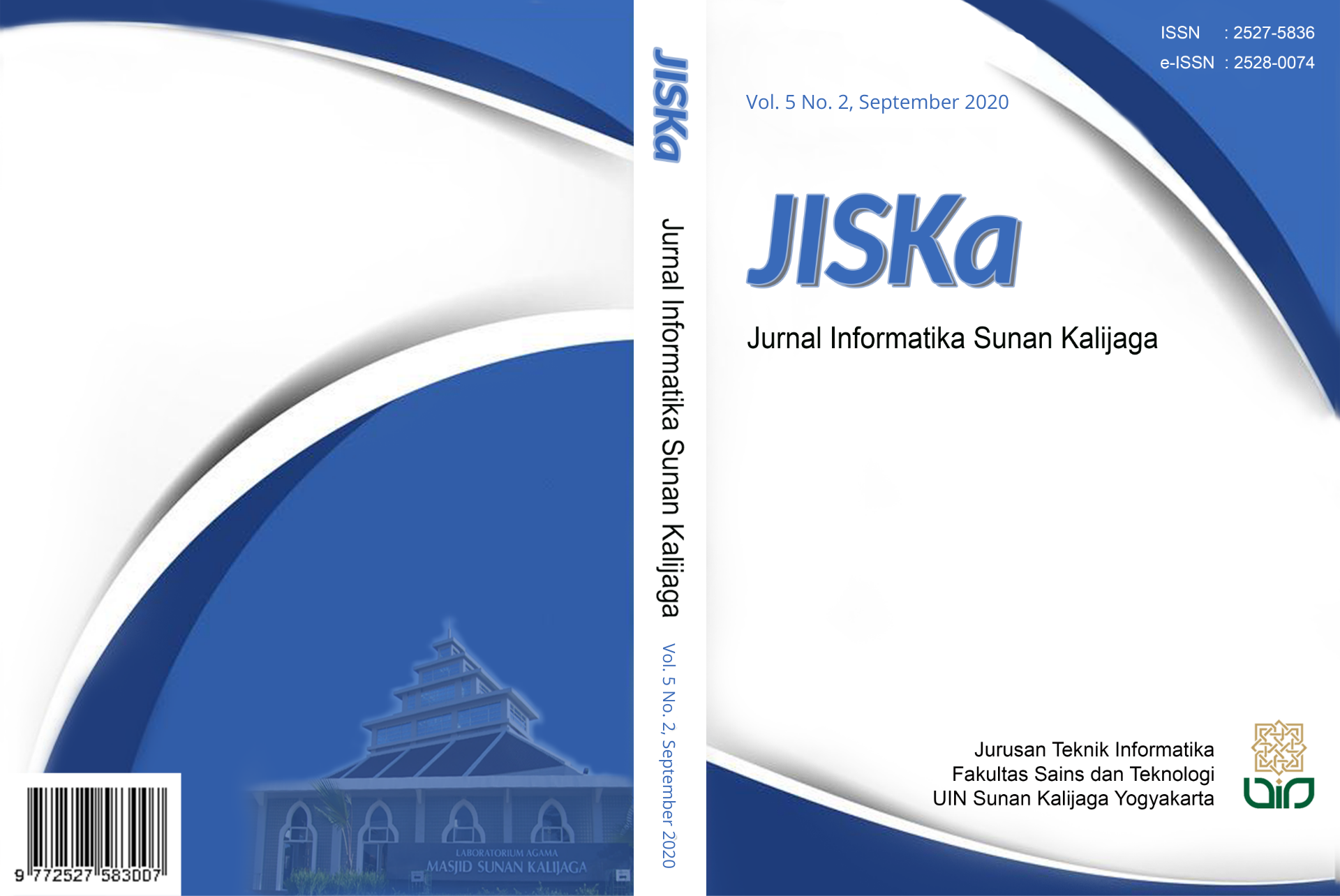Steganalysis Bukti Digital pada Media Storage Menggunakan Metode GCFIM
DOI:
https://doi.org/10.14421/jiska.2020.52-04Abstract
Steganography is an anti-forensic technique that allows a criminal to hide information in other messages, so that during an examination it will be difficult to obtain evidence of the crime information. Therefore we need a technique to detect hidden messages in the data. This technique is known as steganalysis. Steganalysis is an anti-steganography science whose main purpose is to study the hiding characteristics of data on digital media and detect the existence of secret messages that are hidden using steganography techniques. The purpose of this study is to apply steganalysis techniques to detect the presence of messages that are hidden in other messages by using the forensic method, namely Generic Computer Forensic Investigation Model (GCFIM). In this study, the process of inserting steganographic messages using the Hiderman application, while the steganalysis process uses the StegSpy application. The results obtained in this study were the process of steganalysis using the help of the StegSpy application proved to be successful in detecting the presence of hidden messages in the five files that were scanned by steganographic messages.
References
Anwar, N., & Riadi, I. (2017). Analisis Investigasi Forensik WhatsApp Messanger Smartphone Terhadap WhatsApp Berbasis Web. Jurnal Ilmiah Teknik Elektro Komputer Dan Informatika, 3(1), 1. https://doi.org/10.26555/jiteki.v3i1.6643
Ardiyasa, I. W. (2018). Implementasi Teknik Data Hidding Untuk Pengamanan Pesan Rahasia Pada Media Digital. Seminar Nasional Sistem Informasi Dan Teknologi Informasi 2018, 601–605.
Fauzan, A., Riadi, I., & Fadlil, A. (2017). Analisis Forensik Digital Pada Line Messenger Untuk Penanganan Cybercrime. Annual Research Seminar (ARS), 2(1), 159–163. http://seminar.ilkom.unsri.ac.id/index.php/ars/article/view/832/752
Olson, E., Carter, L., & Liu, Q. (2017). A Comparison Study Using StegExpose for Steganalysis. International Journal of Knowledge Engineering, 3(1), 8–12. https://doi.org/10.18178/ijke.2017.3.1.079
Palmer, G. (2001). A road map for digital forensic research. Proceedings of the Digital Forensic Research Conference, DFRWS 2001 USA, iii–42.
patrolisiber. (2019). Statistik Jumlah Laporan Polisi yang dibuat masyarakat. Patrolisiber.Id. https://patrolisiber.id/statistic
Rosalina, V., Herli, D., Informasi, F. T., Raya, U. S., Informasi, F. T., Raya, U. S., Forensik, D., Model, P., Framework, Z., & Clark, J. G. (2015). Pengembangan Model Tahapan Digital Forensic Untuk Mendukung. 0–5.
Saputra, A. P., Mubarok, H., & Widiyasono, N. (2017). Analisis Digital Forensik pada File Steganography (Studi kasus : Peredaran Narkoba). Jurnal Teknik Informatika Dan Sistem Informasi, 3(1), 179–190. https://doi.org/10.28932/jutisi.v3i1.594
Shrivastava, G. (2012). Forensic Computing Models: Technical Overview. 207–216. https://doi.org/10.5121/csit.2012.2222
Utomo, Y. B., & Erwanto, D. (2019). Analisa Teknik Steganografi dan Steganalysis Pada File Multimedia Menggunakan Net Tools dan Hex Editor. Generation Journal, 3(1), 16–22. https://doi.org/10.29407/gj.v3i1.12698
Yusoff, Y., Ismail, R., & Hassan, Z. (2011). Common Phases of Computer Forensics Investigation Models. International Journal of Computer Science and Information Technology, 3(3), 17–31. https://doi.org/10.5121/ijcsit.2011.3302
Downloads
Published
How to Cite
Issue
Section
License
Authors who publish with this journal agree to the following terms as stated in http://creativecommons.org/licenses/by-nc/4.0
a. Authors retain copyright and grant the journal right of first publication with the work simultaneously licensed under a Creative Commons Attribution License that allows others to share the work with an acknowledgement of the work's authorship and initial publication in this journal.
b. Authors are able to enter into separate, additional contractual arrangements for the non-exclusive distribution of the journal's published version of the work (e.g., post it to an institutional repository or publish it in a book), with an acknowledgement of its initial publication in this journal.
c. Authors are permitted and encouraged to post their work online (e.g., in institutional repositories or on their website) prior to and during the submission process, as it can lead to productive exchanges, as well as earlier and greater citation of published work.










